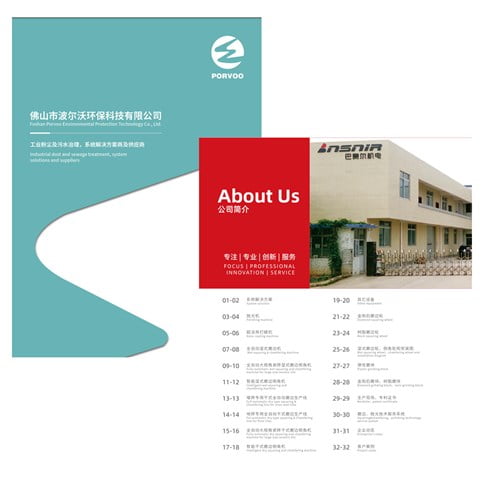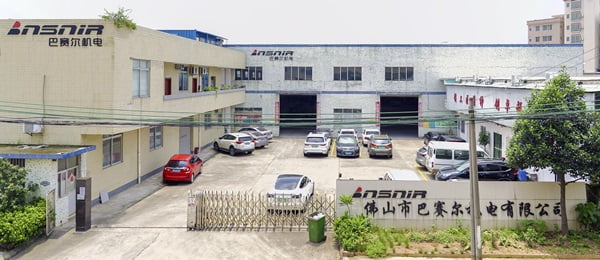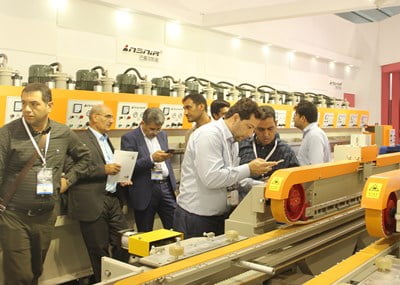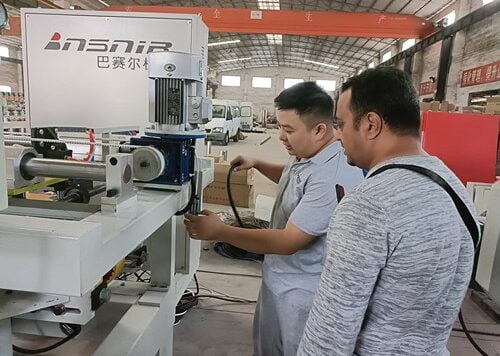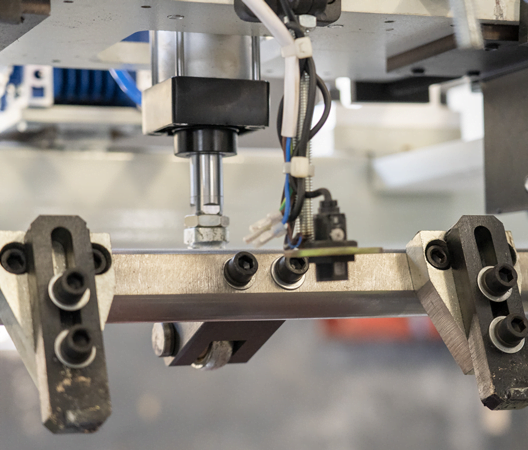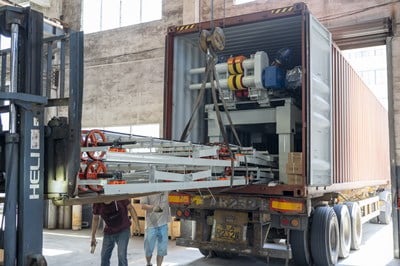The stone and ceramic tile industry faces mounting pressure to balance production costs with quality demands. Manufacturers struggle with outdated polishing methods that consume excessive time, labor, and resources while delivering inconsistent results. Traditional polishing techniques, while familiar, often fall short in meeting modern efficiency standards and quality expectations.
This inefficiency translates to reduced profit margins, increased waste, and potential client dissatisfaction. Companies continuing with conventional methods risk falling behind competitors who embrace advanced technologies. The cumulative effect of suboptimal polishing processes can significantly impact a manufacturer’s bottom line and market position.
This comprehensive analysis examines how Lappato polishing technology addresses these critical challenges. We’ll explore detailed cost comparisons, efficiency metrics, and quality outcomes to help you make informed decisions about upgrading your polishing operations. BASAIR Tech has been at the forefront of this technological evolution, providing industry-leading solutions.
What is Lappato Polishing and How Does it Compare to Traditional Methods?
Lappato polishing represents a revolutionary approach to surface finishing that combines controlled abrasion with precision engineering. Unlike traditional polishing methods that rely on sequential grinding stages, lappato technology employs specially designed diamond abrasive tools that create a distinctive semi-polished surface finish.
The Technical Foundation
Traditional polishing methods typically involve multiple stages using progressively finer abrasives. This process can require 8-12 different grit levels, from coarse 60-grit to fine 3000-grit materials. Each stage demands separate equipment, extensive labor, and significant time investment.
In contrast, diamond lappato abrasive tools utilize a single-stage process that achieves comparable results. These tools feature precisely calibrated diamond particles embedded in a resin matrix, enabling controlled material removal while maintaining surface integrity.
Process Efficiency Comparison
| Aspect | Traditional Methods | Lappato Polishing |
|---|---|---|
| Processing Stages | 8-12 stages | 1-2 stages |
| Equipment Required | Multiple machines | Single machine setup |
| Labor Intensity | High | Moderate |
| Setup Time | 2-3 hours | 30-45 minutes |
The fundamental difference lies in the controlled randomness of the lappato process. While traditional methods aim for mirror-like finishes, lappato creates intentional micro-textures that enhance both aesthetic appeal and functional properties like slip resistance.
Surface Characteristics
Traditional polishing produces highly reflective surfaces with gloss levels typically exceeding 80 units. Lappato finishing achieves 20-60 gloss units, creating a sophisticated matte appearance that’s increasingly popular in contemporary design applications.
Industry expert Marco Pellegrini notes, “The lappato technique bridges the gap between polished and honed surfaces, offering designers unprecedented flexibility while manufacturers benefit from simplified production processes.”
What are the Cost Implications of Lappato vs Traditional Polishing?
The financial analysis reveals compelling advantages for lappato technology, though initial investment considerations require careful evaluation. Understanding both direct and indirect costs provides essential insight for informed decision-making.
Initial Investment Analysis
Traditional polishing line setup typically requires $150,000-$300,000 for complete equipment installation. This includes multiple grinding machines, water treatment systems, and extensive conveyor networks. Lappato polishing systems require an initial investment of $80,000-$150,000, representing a 40-50% reduction in capital requirements.
However, the cost benefits extend beyond equipment purchases. Traditional methods necessitate substantial facility modifications to accommodate lengthy production lines, while lappato systems integrate into existing infrastructure with minimal alteration.
Operational Cost Breakdown
| Cost Category | Traditional (per m²) | Lappato (per m²) | Savings |
|---|---|---|---|
| Abrasive Materials | $0.45-$0.65 | $0.25-$0.35 | 44% |
| Energy Consumption | $0.18-$0.25 | $0.12-$0.16 | 35% |
| Labor Costs | $0.35-$0.50 | $0.20-$0.28 | 43% |
| Water Usage | $0.08-$0.12 | $0.05-$0.08 | 37% |
| Total Operating Cost | $1.06-$1.52 | $0.62-$0.87 | 42% |
Long-term Financial Impact
A medium-sized ceramic tile manufacturer processing 500,000 m² annually can expect operational savings of $220,000-$325,000 per year by implementing lappato technology. The payback period typically ranges from 8-18 months, depending on production volumes and local labor costs.
These calculations include reduced maintenance requirements, as lappato systems involve fewer moving parts and consume less consumable materials. Traditional polishing lines often require daily maintenance across multiple processing stages, while lappato systems typically need attention only every 3-4 days.
Hidden Cost Advantages
Beyond direct operational savings, lappato polishing reduces waste generation by approximately 35%. Traditional methods produce significant amounts of slurry and require extensive water treatment systems. The simplified lappato process generates less waste while maintaining environmental compliance standards.
Quality consistency improvements also contribute to cost benefits. Traditional methods show higher rejection rates due to surface defects and inconsistent finishes. In our experience, lappato processing reduces quality-related waste by 25-30%, translating to substantial material cost savings.
How Does Lappato Polishing Deliver Superior Efficiency?
Efficiency improvements represent perhaps the most significant advantage of lappato technology. The streamlined process eliminates bottlenecks common in traditional polishing operations while maintaining superior output quality.
Production Speed Comparison
Traditional polishing methods typically process 15-25 m² per hour, depending on material hardness and desired finish quality. Lappato polishing systems achieve processing speeds of 35-50 m² per hour, representing a 75-100% productivity increase.
This dramatic improvement stems from reduced processing stages and optimized material handling. Traditional lines require careful coordination between multiple machines, creating potential delays and synchronization challenges. Lappato systems operate as integrated units, eliminating inter-stage coordination complexities.
Labor Efficiency Gains
| Efficiency Metric | Traditional Methods | Lappato Polishing |
|---|---|---|
| Operators Required | 6-8 per shift | 3-4 per shift |
| Skill Level Required | High specialization | Moderate training |
| Training Time | 3-6 months | 2-4 weeks |
| Setup Complexity | High | Low |
The simplified operation reduces dependency on highly skilled technicians. While traditional polishing requires operators with extensive experience in managing multiple grinding stages, lappato systems can be operated effectively by moderately trained personnel.
Quality Consistency Benefits
According to recent industry research, lappato polishing demonstrates 40% better consistency in surface finish quality compared to traditional methods. This improvement directly translates to reduced rework, fewer customer complaints, and enhanced brand reputation.
A case study from a Italian ceramics manufacturer showed that implementing advanced lappato abrasive tools resulted in a 60% reduction in surface defect rates. The company reported savings of €180,000 annually from reduced waste and improved customer satisfaction.
The consistency advantage becomes particularly apparent in large-scale projects where surface uniformity is critical. Traditional methods often show variations between production batches, while lappato processing maintains consistent characteristics throughout extended production runs.
What Surface Finish Quality Can You Expect from Each Method?
Surface finish quality represents the ultimate measure of polishing effectiveness. Both traditional and lappato methods achieve excellent results, but with distinctly different characteristics and applications.
Traditional Polishing Quality Characteristics
Traditional polishing excels in producing high-gloss mirror finishes with exceptional light reflection properties. These surfaces typically achieve 85-95 gloss units, creating dramatic visual impact suitable for luxury applications. The multi-stage process allows precise control over surface roughness, achieving Ra values as low as 0.05 micrometers.
However, traditional methods sometimes struggle with consistency across large production batches. Variations in operator technique, equipment wear, and environmental conditions can create subtle but noticeable differences in surface quality.
Lappato Finish Advantages
Lappato polishing creates unique surface textures that combine aesthetic appeal with functional benefits. The controlled micro-roughness provides superior slip resistance while maintaining elegant appearance. This characteristic makes lappato finishes particularly suitable for high-traffic commercial applications.
The surface texture also offers practical advantages in maintenance and cleaning. Unlike high-gloss surfaces that show every fingerprint and water spot, lappato finishes maintain their appearance with minimal maintenance requirements.
Technical Specifications Comparison
| Quality Parameter | Traditional Polish | Lappato Finish |
|---|---|---|
| Gloss Level (GU) | 85-95 | 20-60 |
| Surface Roughness (Ra) | 0.05-0.15 μm | 0.8-2.5 μm |
| Slip Resistance | Low | High |
| Maintenance Requirements | High | Low |
| Wear Resistance | Good | Excellent |
Application-Specific Performance
Dr. Sarah Chen, a materials science researcher, explains: “Lappato surfaces demonstrate superior performance in commercial environments due to their balanced approach to aesthetics and functionality. The controlled texture provides safety benefits without compromising visual appeal.”
In residential applications, lappato finishes have gained popularity for their sophisticated appearance and practical benefits. The reduced maintenance requirements appeal to homeowners seeking luxury aesthetics without high-maintenance obligations.
When Should You Choose Lappato Over Traditional Polishing Methods?
The decision between lappato and traditional polishing depends on specific application requirements, production priorities, and market positioning. Understanding optimal use cases ensures maximum benefit from technology investment.
Production Volume Considerations
High-volume manufacturers benefit most significantly from lappato technology. The efficiency gains and cost reductions become more pronounced at production levels exceeding 100,000 m² annually. At these volumes, the operational savings justify the technology transition costs within 12-18 months.
Smaller manufacturers should evaluate their growth projections and market positioning. If expansion plans include increased production capacity, implementing lappato technology during the scaling phase provides optimal timing for technology adoption.
Market Demand Factors
Current market trends strongly favor lappato finishes in several key segments. Commercial construction projects increasingly specify lappato surfaces for their durability and safety characteristics. The hospitality industry particularly values the combination of aesthetic appeal and low maintenance requirements.
Residential markets show growing appreciation for lappato finishes, especially in premium segments where homeowners seek distinctive textures and reduced maintenance obligations. This trend suggests expanding market opportunities for manufacturers offering lappato products.
Technical Suitability Analysis
Lappato technology works exceptionally well with porcelain tiles, natural stone, and engineered stone surfaces. The process is particularly effective with materials having Mohs hardness ratings of 5-8, covering most common architectural applications.
However, certain specialized applications still benefit from traditional polishing methods. Ultra-high-gloss requirements, such as luxury countertops or decorative panels, may necessitate traditional multi-stage processes to achieve desired specifications.
Competitive Positioning Benefits
Manufacturers implementing lappato technology gain competitive advantages through:
- Reduced production costs enabling competitive pricing
- Unique product differentiation in crowded markets
- Enhanced production flexibility for custom orders
- Improved profit margins on standard products
A Spanish tile manufacturer reported 25% market share growth after implementing comprehensive lappato polishing solutions, attributing success to competitive pricing and superior product quality.
What Are the Long-term Benefits and Limitations of Each Approach?
Understanding long-term implications helps manufacturers make strategic decisions that align with business objectives and market evolution. Both approaches offer distinct advantages and face specific challenges over extended operational periods.
Lappato Technology Long-term Advantages
Lappato polishing systems demonstrate exceptional durability and consistent performance over extended periods. The simplified mechanical design reduces maintenance requirements and extends equipment lifespan. Users typically report 20-30% longer operational life compared to traditional polishing equipment.
Technology scalability represents another significant advantage. Lappato systems can be upgraded or modified more easily than traditional multi-stage installations. This flexibility proves valuable as production requirements evolve or new surface finish demands emerge.
The environmental benefits compound over time. Reduced water consumption, lower energy usage, and decreased waste generation contribute to improved sustainability metrics. These factors become increasingly important as environmental regulations tighten and corporate sustainability commitments intensify.
Potential Limitations and Considerations
While lappato technology offers substantial benefits, certain limitations require consideration. The initial learning curve can temporarily impact production efficiency as operators adapt to new processes. However, this transition period typically lasts 2-4 weeks with proper training programs.
Product differentiation represents both an advantage and potential limitation. While lappato finishes offer unique characteristics, they may not suit all market segments. Manufacturers must evaluate their customer base and market positioning to ensure compatibility with lappato product offerings.
Traditional Method Longevity
Traditional polishing methods maintain relevance in specific market segments requiring ultra-high-gloss finishes. Certain luxury applications and specialized products continue to demand the mirror-like surfaces achievable only through multi-stage traditional processes.
| Long-term Factor | Traditional Methods | Lappato Polishing |
|---|---|---|
| Equipment Lifespan | 8-12 years | 12-18 years |
| Technology Evolution | Gradual improvement | Rapid advancement |
| Market Adaptability | Limited | High |
| Sustainability Profile | Moderate | Excellent |
Strategic Recommendations
For manufacturers considering technology transition, a phased approach often proves most effective. Implementing lappato technology for high-volume standard products while maintaining traditional capabilities for specialized applications provides optimal flexibility.
The industry consensus suggests that lappato technology represents the future of surface finishing for the majority of applications. Early adopters gain competitive advantages while the technology continues evolving and improving.
Conclusion
The cost-benefit analysis clearly demonstrates lappato polishing’s superior value proposition for most manufacturing applications. With operational cost savings of 40-45%, production efficiency improvements of 75-100%, and enhanced product quality, lappato technology offers compelling advantages over traditional methods.
The financial benefits extend beyond immediate cost reductions. Improved consistency, reduced waste generation, and enhanced market positioning create sustainable competitive advantages that compound over time. While traditional polishing maintains relevance in specialized high-gloss applications, the versatility and efficiency of lappato polishing make it the preferred choice for forward-thinking manufacturers.
Your next steps should include evaluating your current production costs, analyzing market demand for lappato finishes, and assessing the potential return on investment for your specific situation. Consider scheduling a consultation with technology providers to explore customized solutions tailored to your operational requirements.
The surface finishing industry continues evolving toward more efficient, sustainable, and cost-effective solutions. Manufacturers who embrace these advances position themselves for long-term success in increasingly competitive markets.
What factors are most important in your polishing technology decision? The investment in advanced lappato abrasive solutions could transform your manufacturing operations and market position.
Frequently Asked Questions
Q: What is the primary difference between lappato and traditional polishing methods?
A: The primary difference between lappato and traditional polishing methods lies in their approach to surface treatment. Lappato involves selective abrasion to create a semi-polished effect, preserving more of the tile’s original texture compared to traditional polishing, which uses finer abrasives to achieve a uniform, mirror-like surface.
Q: How does the lappato technique affect the cost-benefit analysis compared to traditional polishing?
A: In a cost-benefit analysis, lappato techniques can offer advantages by reducing the need for extensive polishing, which can be time-consuming and costly. However, the specialized machinery and abrasives used in lappato processes can also increase costs. The balance depends on the specific application and the desired finish.
Q: What are the key benefits of using lappato over traditional polishing methods?
A: The key benefits of lappato include:
- Unique Aesthetic: Lappato creates a distinctive semi-polished look that is often preferred for its soft sheen and texture preservation.
- Cost Efficiency: By using less intensive polishing, lappato can be more cost-effective for certain applications.
- Versatility: It offers a flexible finish suitable for various design styles.
Q: How does the choice of material impact the outcome of lappato vs. traditional polishing?
A: The choice of material significantly impacts both lappato and traditional polishing outcomes. Porcelain tiles, due to their dense structure, generally produce more consistent results with lappato finishes. In contrast, traditional ceramics may yield more variable results due to their less consistent composition.
Q: What factors influence the cost implications in a cost-benefit analysis of lappato vs. traditional polishing methods?
A: Several factors influence the cost implications:
- Abrasive Type: The use of diamond abrasives in lappato can increase costs but offers high efficiency and long tool life.
- Production Volume: High-volume production can benefit from the efficiency of lappato techniques.
- Desired Finish: The need for a specific aesthetic can sway the decision between lappato and traditional polishing based on cost and performance.
External Resources
The Future of Lappato Abrasive Technology: 2025 Innovations (https://basair-tools.com/the-future-of-lappato-abrasive-technology-2025-innovations/) – This resource discusses the advancements in lappato abrasive technology, highlighting operational efficiencies such as reduced energy and water consumption compared to traditional polishing methods. It provides insights into the cost benefits of using fewer stages in the polishing process.
The Ultimate Guide to Lappato Abrasive for Ceramic Tiles (https://basair-tools.com/the-ultimate-guide-to-lappato-abrasive-for-ceramic-tiles/) – While not directly focused on cost-benefit analysis, this guide provides a comprehensive understanding of lappato techniques and their differences from traditional polishing methods, which could inform a cost-benefit analysis.
Material Removal Mechanisms in Lapping and Polishing (https://escholarship.org/uc/item/4hw2r7qc) – This paper reviews the fundamental mechanisms of material removal in lapping and polishing, which could be useful in understanding process efficiency and cost considerations when comparing lappato and traditional methods.
Economic Evaluation of Polishing Processes (https://www.solventum.com/content/dam/public/language-masters/en/pfb/document/2023/spsd-bp-polisher-cost-modeling-app-note-long-gbl.pdf) – Although not specific to lappato vs. traditional polishing, this resource provides insights into cost modeling and evaluation of polishing processes, which could be applied to a cost-benefit analysis.
Development and Theoretical Analysis of Novel Polishing Techniques (https://www.sciencedirect.com/science/article/abs/pii/S0736584518305015) – Discusses robot-assisted polishing techniques, highlighting advantages like flexibility and cost efficiency, which might be relevant when evaluating modern polishing methods.
Basair Tools: Solutions for Ceramic Tile Finishing (https://basair-tools.com/) – Offers a range of solutions for ceramic tile finishing, including lappato technology. While not directly labeled as a cost-benefit analysis, it provides resources that could be used to assess the economic advantages of lappato methods compared to traditional polishing.

